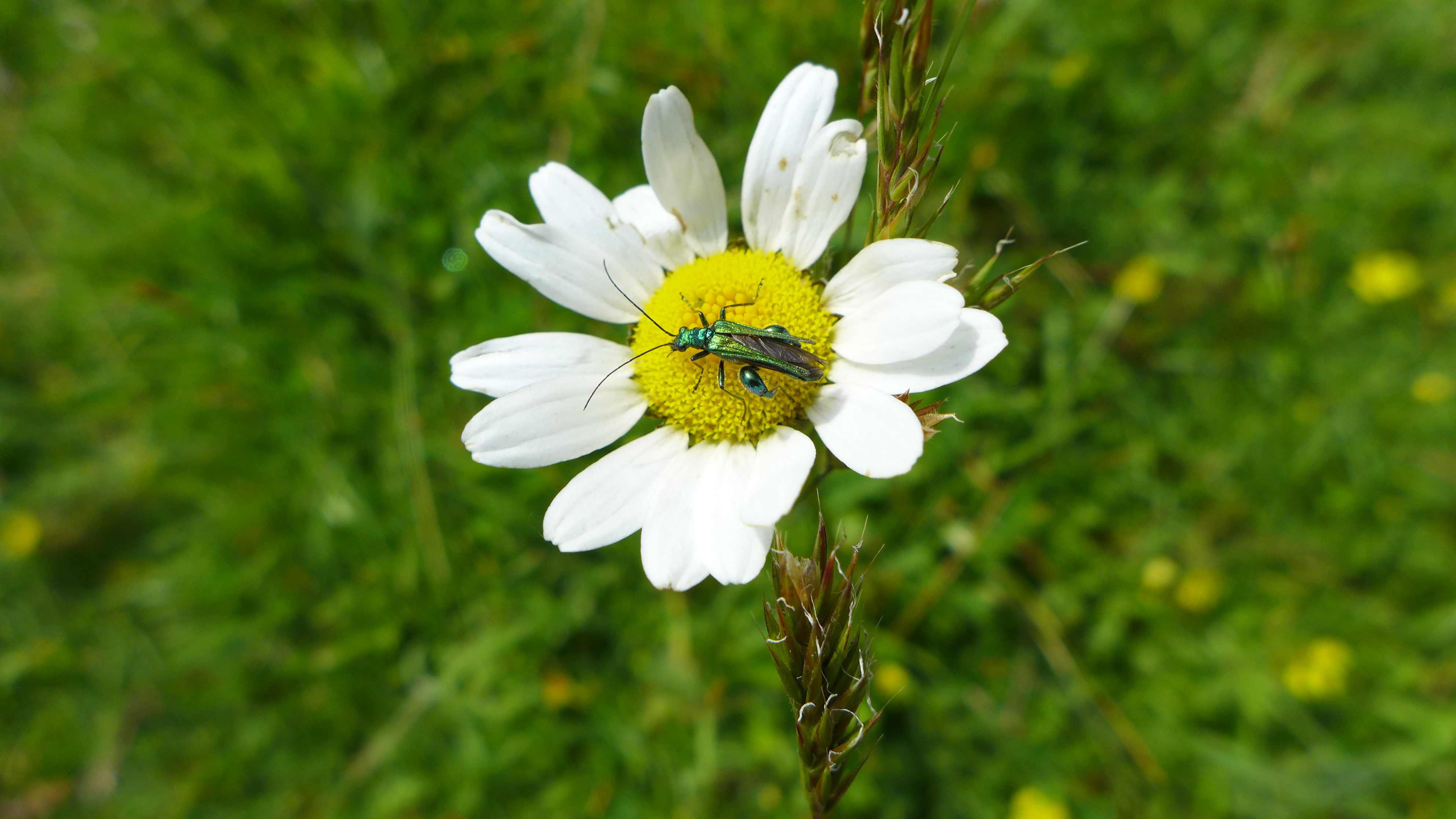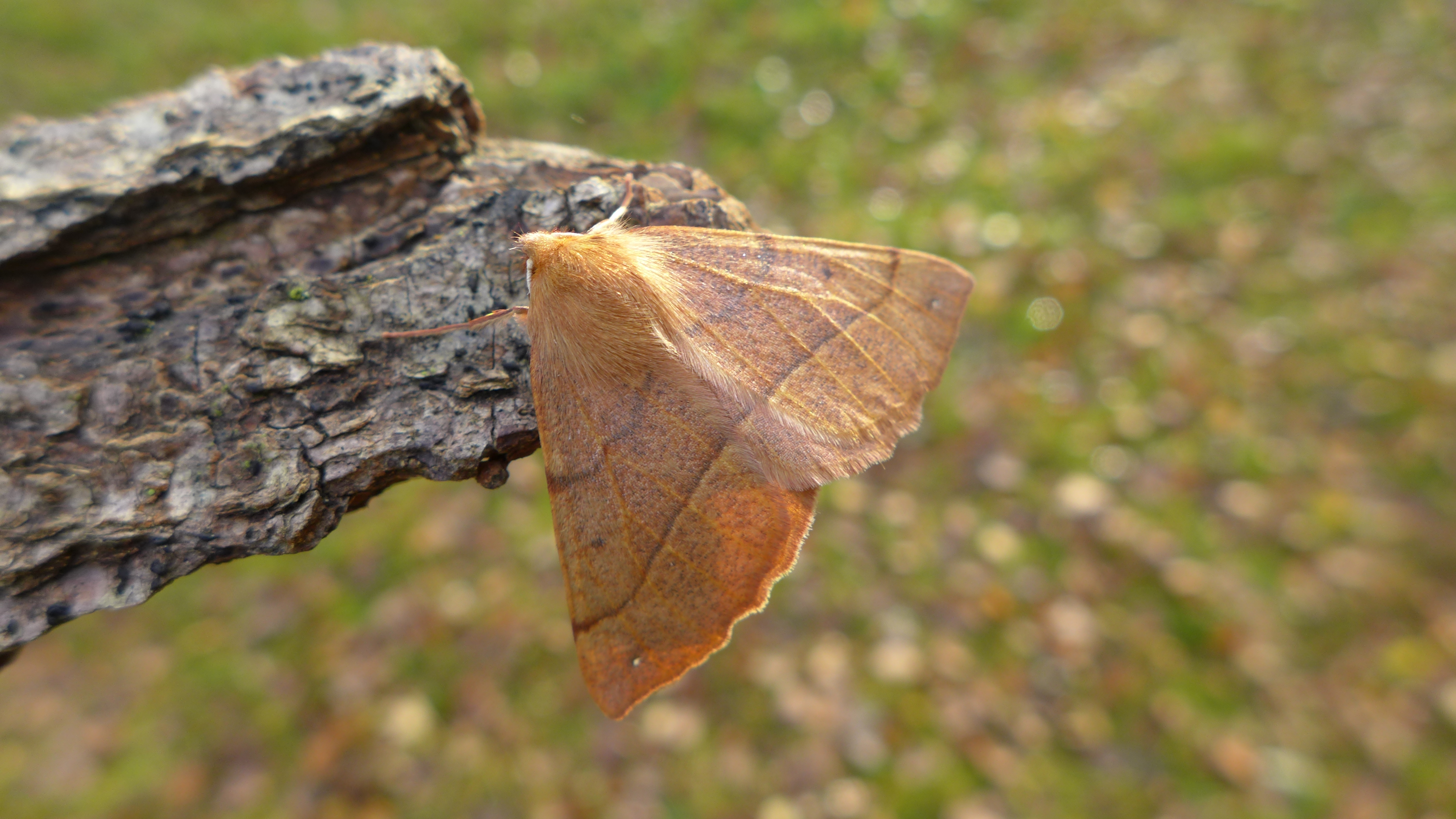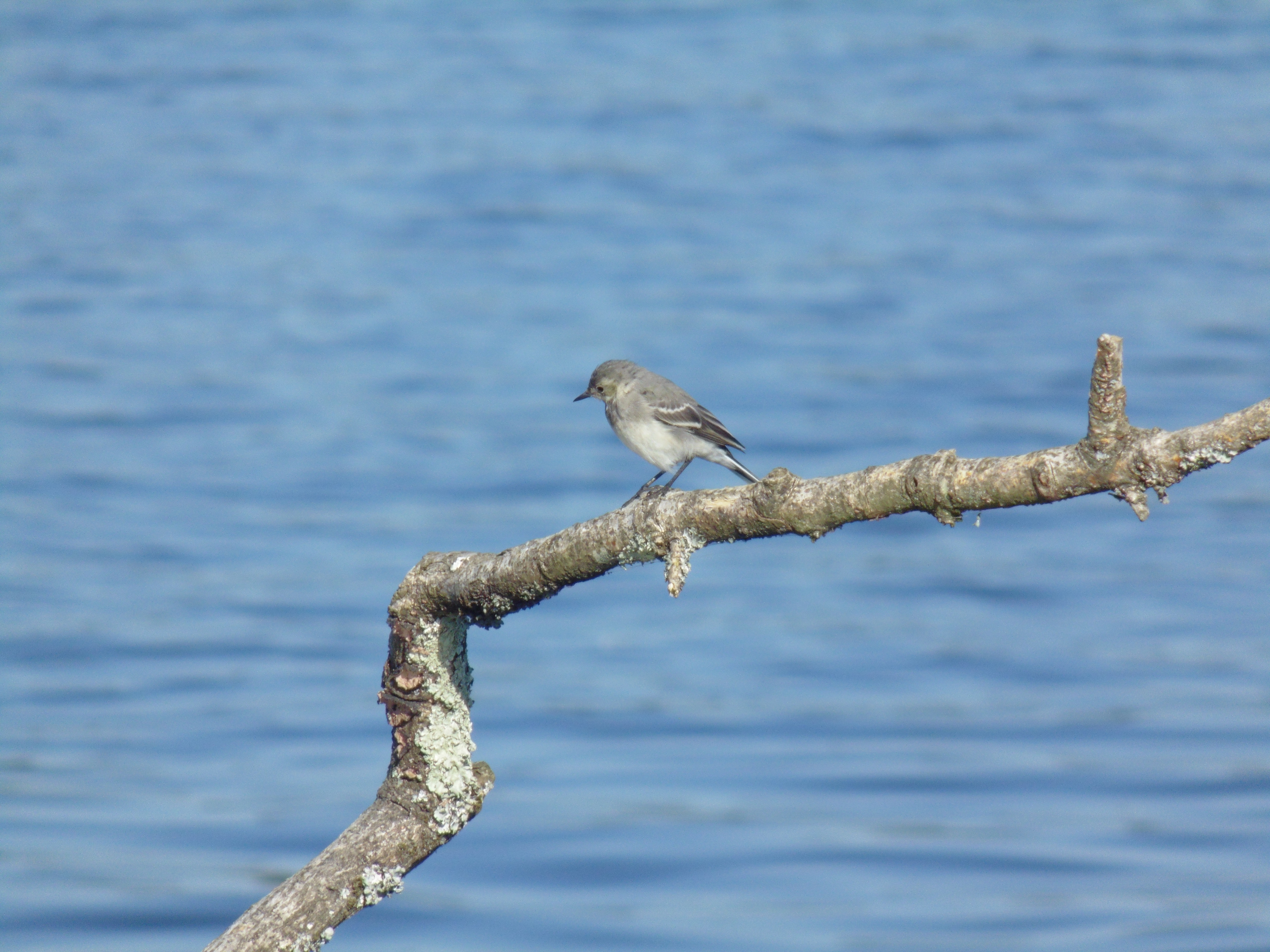I’ve fallen behind with my Young Naturalists updates, but since meeting at the reserve for the first time in April, enjoying the bird song and river dipping, we’ve been out onsite enjoying all the reserve has to offer, looking for reptiles, improving our moth identification, pond dipping and enjoying the insect life in the meadow. We’ve also been campfire cooking and improving the biodiversity of one part of the reserve by spreading wildflower seed.
At the end of May we went for a walk on the northern part of the reserve, in the hope of finding some reptiles. We saw chiff chaff, blackcap and reed bunting and enjoyed listening to the reed warblers and Cetti’s warblers calling in the reed bed.
We headed off into the reedbed to check some of the reptile refugia or felts used by the volunteers when they survey the reptiles. Our first sighting however wasn’t of a reptile, instead we found this caterpillar of the Oak eggar moth on top of one of the felts:

Oak eggar caterpillar
The hairy caterpillars feed on bramble, blackthorn, willow, hawthorn, hazel and other woody plants.
Under another refugia we were lucky enough to see our first reptiles, finding two adders. The first disappeared quickly into the vegetation, but the second stayed long enough for some of the group to get a good look and take some photos:

Adder by Daisy Meadowcroft

Adder by Daisy Meadowcroft
After leaving the reed bed we saw speckled woods enjoying the sunshine and watched the sand martins flying over Goosander Hide. We also saw a female adder basking on the bank by the hide.
After lunch we decided to pond dip, catching a very smart male smooth newt:

Smooth newt
We also caught an impressive Emperor dragonfly nymph, which given the number of exuvia around the edge of the pond was a bit of a surprise, there were still more lurking in there!

Emperor dragonfly nymph

Dragonfly exuvia

Dragonfly exuvia
The larva’s final moult takes place out of the water. As the adult dragonfly emerges from its larval skin, the cast skin or exuvia is left behind. It’s always fun to carefully look for evidence of their metamorphosis amongst the vegetation (and man made structures!) in the pond margins and the group had a good hunt, photographing their finds.

Pond dipping

Pond dipping

Photographing by the pond

Exuvia hunting
In June I had planned to spend the session focusing on insects, but with the weather so changeable we ended up adding in some campfire cooking as well. We began by looking through the moth trap where the highlight was this Poplar hawk-moth:

Poplar hawk-moth

Alex with the Poplar hawk-moth
We also had a Buff tip, with its amazing camouflage, a very smart Muslin moth and a Burnished brass:

Buff tip, doing its best broken silver birch twig impression

Muslin moth

Burnished brass
Rummaging through the moth trap didn’t take very long, and with the sun briefly making an appearance we hot footed it to the meadow before the showers came.

Meadow sweeping
In the meadow we saw a small skipper butterfly, grasshoppers, a speckled bush cricket, a green leaf weevil and a green-eyed flower bee enjoying the selfheal.

Small skipper

Speckled bush cricket

Grasshopper

Green leaf weevil

Green-eyed flower bee

Green-eyed flower bee
We also saw a number of Thick-legged flower beetles, also known as swollen-thighed beetles and false oil beetles. They are often seen on the flowers of ox-eye daisies and other open-structured flowers and only the males have swollen thighs:

Male Thick-legged flower beetle on Ox-eye Daisy

Female Thick-legged flower beetle on Perforate St John’s-wort
The meadow and the lichen heath are both covered in Perforate St John’s-wort at the moment, it is having a really good year. Traditionally it was used as a remedy for all kinds of ailments, including wounds and burns, and is still popular today for the treatment of mild depression. Research and opinions however differ on how effective the latter is.
It can be identified by its bright yellow star shaped flowers and the tiny ‘holes’ in its leaves. The holes are in fact colourless glands that apparently give off a foxy smell. If you hold a leaf up to the sun, the tiny holes are easy to see, but they’re definitely more obvious on a sunny day!

Tiny ‘holes’ in the leaves of Perforate St John’s-wort on a sunnier day
After a short while in the meadow, we headed back to the Centre collecting nettle tops on the way to make some nettle soup. We also picked some mint and lemon balm from around the pond to make tea. After gathering the kit and our lunches, we headed to the campfire area.
Alex decided to toast his sandwich and after eating we boiled some water for the tea and made our soup. Both had mixed reactions, although to be fair some teas did contain nettle, mint and lemon balm and we possibly gave the wrong person the nettles to wash… so our soup did contain a number of less welcome additions!

Mint and lemon balm

Nettle soup

Nettle soup

Campfire cooking

Campfire cooking
July’s session was also influenced by the weather. I had planned to do the Big Butterfly Count with the group last Sunday, something we have participated in with them for the last few years. The UK wide survey is running until the 8th August, so there’s still time to take part if you would like to, you just need 15 minutes and a sunny spot…
Thankfully, moth trapping has improved over the past few weeks, with more species and numbers of moths coming to the traps, and we were able to spend the morning having a good look through and identifying most of what we found.

Identifying moths

Common Rustic
Daisy made a list of those we were able to identify (we lost a few on opening the traps and some of the micro moths did stump us) and we managed to record 70 moths of 39 species in the first trap and 63 moths of 28 species in the second trap. Both traps were close to the Centre, with one positioned out the front towards the mini meadow by the Welcome Hut and the other positioned out the back of the building.
Our grand total from the Saturday night was 133 moths of 52 species. Here are some of the highlights:
This slideshow requires JavaScript.
The Large emerald in particular proved popular:

Large emerald

Rosie photographing the large emerald
After lunch, we went back to the meadow to see if the Bird’s-foot trefoil had gone to seed. If it had, we were going to collect some to add to the other seed we had from Bob to sow, but unfortunately it wasn’t quite ready. We did see a Common blue butterfly resting on a seed head:

Common blue
We then went looking for wasp spiders on the lichen heath, managing to find two in amongst the soft rush. Their colours mimic the common wasp, keeping them safe from predators.

Wasp spider
Wasp spiders build large orb webs in grassland and heathland. Their webs are quite distinctive, with a wide white zig-zag running down the middle known as a stabilimentum.
After some impromptu boat making by Kimberley and Harry, we stopped off at the river to see whether or not their boats would sail:

Kimberley with her rush boat

Harry’s boat

Testing boats
We then began our seed sowing, adding Bluebell seed in amongst the hazels to the side of the path between the bridge over the Dockens Water and the road crossing to Tern Hide. We swept away the leaf litter and put the seed thinly on the soil surface, before brushing the leaves back over to cover them.
We then crossed over the road towards Tern Hide and went through the gate to the part of the site currently still closed to visitors. This was once a concrete plant, and when the plant was demolished we began restoring the area, including the old main entrance roadway. Although it has taken time, this spot is now well colonised by lots of plants and our addition of some extra seed will hopefully help improve it even more.
We added Wild carrot to the driveway, scattering it thinly onto patches of bare ground, Devils-bit scabious up on the bank as it prefers a deeper soil and Jack-go-to-bed-at-noon on the same bank, poking each seed individually into the ground using a pencil (we also saved some of these for the mini meadow by the Welcome Hut). Finally we also added Yellow rattle seed and some assorted hawkbits and crow garlic.

Wildflower seeds

Seed sowing on the roadway

Seed sowing on the bank
Fingers crossed some of them come up!
Thank you to the Cameron Bespolka Trust for funding our purchase of tools and equipment for the group.

Green-eyed flower bee on Inula hookeri by the Education Centre





































































































